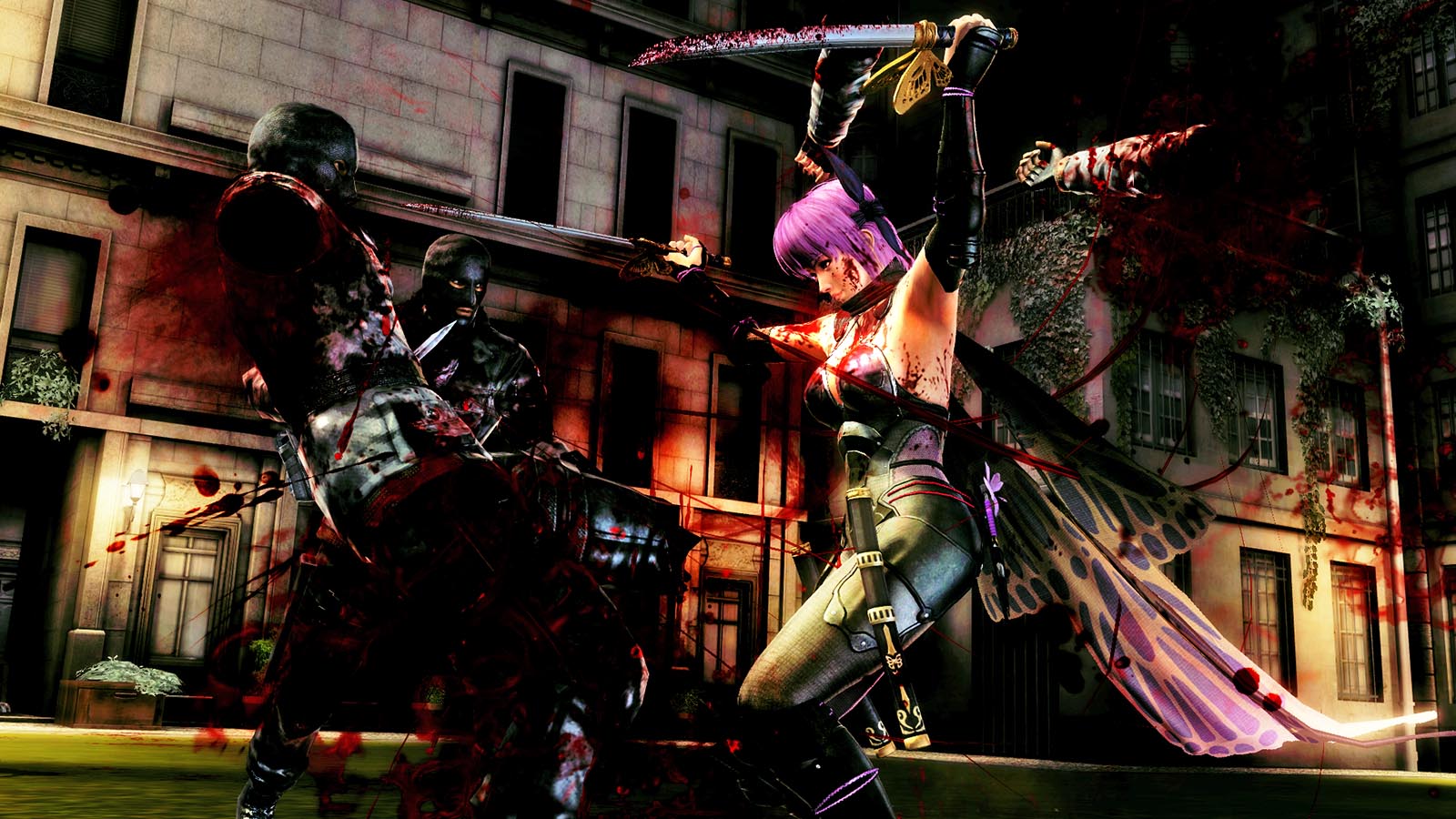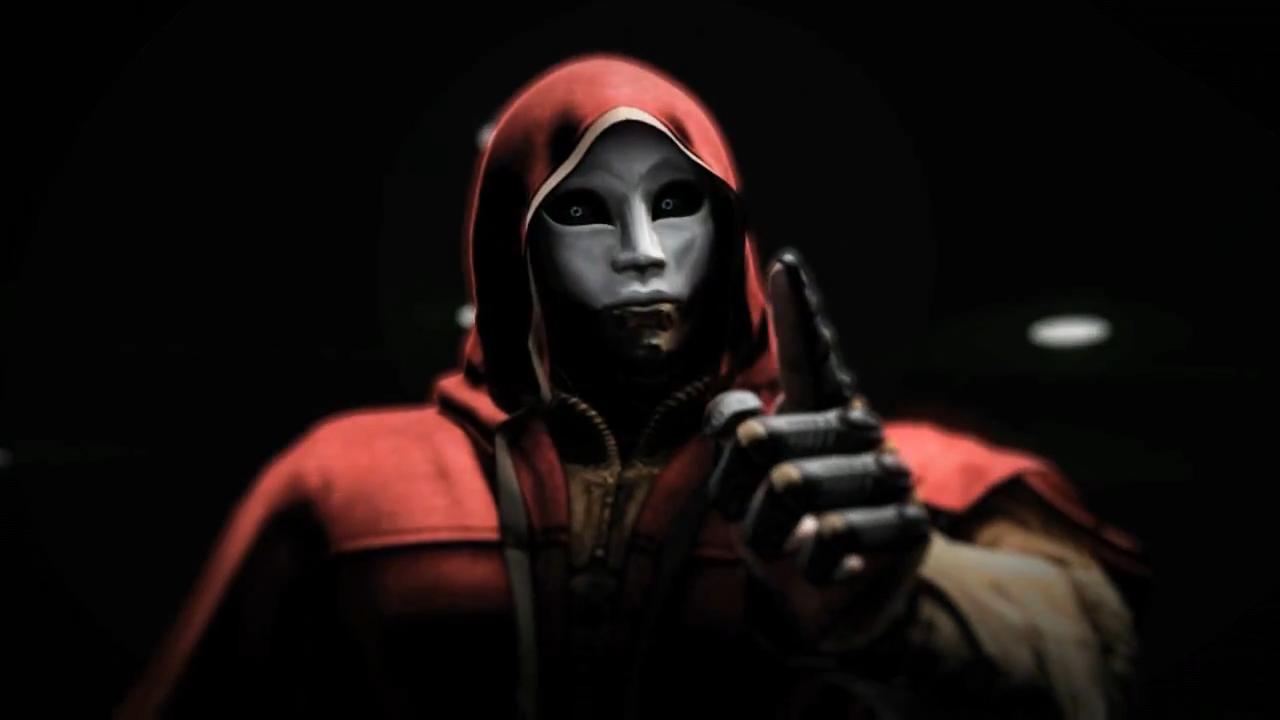|
Ninja Gaiden 3 - Razor's Edge
Originally released to
lacklustre reception in early 2012, Ninja Gaiden 3 raised the ire
of fans for downgrading the difficulty in a misguided attempt to make
the classic series more accessible. A franchise thatís notorious for
being as punishing as it is rewarding, for years the Ninja Gaiden
series was held up as one of the pinnacles of hardcore gaming and this
re-release (Originally an enhanced port for the Wii U before finding its
way back to current gen consoles) sees developer Team Ninja scrambling
to rectify the major bones of contention fans had with the initial
release.

Aside from a few bonus
missions where you play as Ayane from Dead or Alive, the story
for Ninja Gaiden 3: Razorís Edge hasnít changed an iota from the
original release, which of course means itís still gleefully bat-shit
insane. Protagonist Ryu Hayabusa finds himself pulled into attempting to
avert a hostage situation due to the terrorists explicitly stating that
he himself is their one and only demand. After the mission is botched,
Ryu faces off with the Joey Jordison lookalike leader of the terrorist
cell, getting his right arm tainted by a blood curse in the process.
Consumed by a murderous
rage, Ryu must locate a method of removing the curse whilst also
contending with the machinations of the terrorist organisation and what
exactly his true place is in their overall scheme for world domination.
Chuck in your archetypically bonkers boss fights and a healthy
smattering of enemy Mech-Tanks and youíre left with a pretty accurate
summation of all of the clichťs of Japanese pop culture rolled up in one
pretty little package.

The stories in previous
instalments were suitably cheesy but Ninja Gaiden 3 ramps up the
ridiculousness to almost uncomfortable levels of camp, especially the
grandiose speeches from the main villain. But, in all honesty, nobody
really comes for the story in a Ninja Gaiden game; ever since its
8-bit origins, the trump card in Ninja Gaidenís arsenal
has always been its over-the-top and challenging combat.
One of the major gripes
with Ninja Gaiden 3 was the exclusion of iconic weapons that have
long become inextricably linked with the character of Ryu; The Staff,
Scythe and Wolverine-like claws all return this time around, but feel
strangely underpowered compared to their previous incarnations. Indeed,
after the novelty of exploring the different combo possibilities wears
off, youíll find yourself sticking mainly to the more powerful Katana.
As for the difficulty,
Team Ninja has shown that theyíve been listening to long time fans of
the series and ramped it up exponentially in an attempt to appease the
hardcore. On this level, theyíve succeeded Ė The game is infinitely more
challenging than its predecessor. Unfortunately, itís too challenging.

The brutal difficulty
of the original entries was tempered by a delicate balance of an
impeccable control scheme and intelligent game design, a balance that
Ninja Gaiden 3: Razorís Edge sorely lacks. In an attempt to bring
back the old-school fans of the series, Team Ninja has overstepped the
mark to the point where the game now feels like an excruciating chore to
play. Aside from increased damage from enemy attacks and the removal of
healing items, the most crippling new addition would have to be the
presence of what seems like a thousand soldiers with rocket launchers
shooting from the sidelines during each and every single fight.
The control system has
been tweaked to resemble the more fluid style of the previous entries,
but instead of the exquisite thrill of chaining together devastating
attacks youíll more often than not find yourself bum rushed by a group
of enemies, frantically spamming the X and Y buttons in an attempt to
disengage from the multiple Kamikaze soldiers who take a good chunk of
your health with them when they go. With the inability to store healing
herbs, youíll have to rely on building up your Ninpo in order to
salvage a fight thatís quickly turned sour, as this is now the only
method of healing mid-fight.
Gore has also been
increased exponentially; visceral geysers of claret gush freely as you
lop off the limbs of foul mouthed soldiers. Enemies are more adept at
blocking and seem much more aggressive this time around, and this time
around also sees some familiar enemies from previous entries making an
appearance.

Level design leaves a
lot to be desired, basically shunting Ryu through corridors leading to
the next area filled with enemies. Occasionally youíll have to do a bit
of rudimentary platforming but for the most part the mechanics for wall
climbing Ė Having to repeatedly hammer the trigger buttons Ė takes any
enjoyment out of these brief respites from combat. If any game is going
to be attributed to the development of Carpal Tunnel Syndrome, then
Razorís Edge is definitely it; itís one of the most physically
exhausting games Iíve played outside of the Kinect.
Graphically the game is
decent looking enough but the animation, character models and low
quality textures all scream ďBargain Bin EffortĒ, which is odd
considering the legacy this series has. Compared even to something like
Arkham City, which preceded Razorís Edge by almost year,
the graphics fail to match the standard expected of modern releases.

The sound design is
sufficiently engaging and competently handled, although the profanity
and non-sequitur laden dialogue is as ridiculously campy as it gets.
There are a nice selection of achievements, many of which are focused on
acquiring new skills and they unlock at a steady pace throughout the
game, giving achievement whores like myself an incentive to keep
playing.
Itís not that
Razorís Edge is bad, exactly, itís just a disappointingly hollow and
unrewarding experience compared to previous entries, and, more to the
point, the dropping of the ball in regards to the balance of difficulty
serves to undo much of the goodwill built on the additions that actually
do work to make this version a better experience.
Final Level
Despite being a solid enough game, Razorís Edge just doesnít feel
like a Ninja Gaiden game. This could be due to the myriad of
concessions made by the developer or the departure of long time series
director Tomonobu Itgaki, but in a landscape populated with recent
exemplary action games such as DMC and Metal Gear Solid:
Revengeance, merely being adequate just isnít enough. In their
attempt to address the issues with the original release, Team Ninja has
inadvertently created a whole new set of problems that serve to detract
from the improvements. The difficulty is now there but the funs till
isnít, and many of the additions seem superfluous. The extra missions
play smoother than the game proper, presumably because they were created
after the fact, but they add little to the experience as a whole and the
DOA cameos seem awkwardly shoehorned in.
A marginally better game than its predecessor, Ninja Gaiden 3:
Razorís Edge is worthy of a rental but the development team are
going to have to return to the drawing board if they hope to return the
series to its former glory. Itís a shame to see such a beloved franchise
topple from such lofty heights; many a weekend was sunk into achieving
perfect scores on Ninja Gaiden: Black in the heady days of my
youth and hopefully the inevitable follow up returns the series to its
classic gaming roots. |